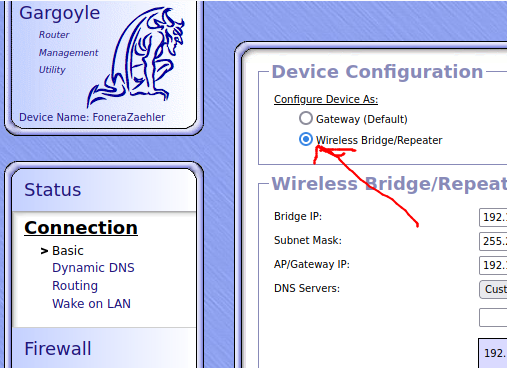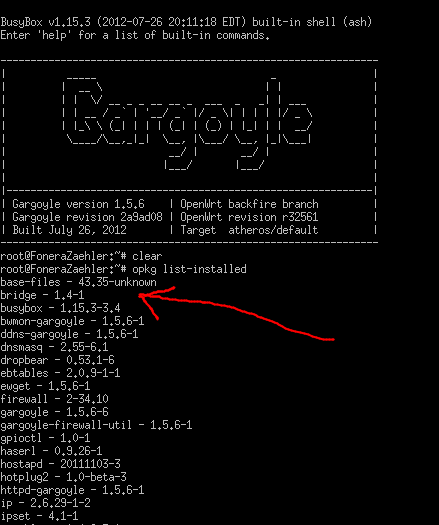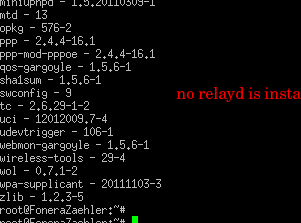Hello,
i have some Router (Fonera 2100) and I want to use them for bring some Ethernet-only-Devices in my Wifi.
Fonera 2100 is supported by OpenWrt.
The device has 1x Ethernet-Port and Wifi, no WAN-Port.
First, I tried to make a bridge for eth0 for testing. You simply have to set the check mark at bridge. The result is a virtual device br-lan. Everything ok.
This is for Bridging Wirered->wifi
But I need it the other way. The Router gets his connection via wifi, and the router should bring device to my wifi which are connected to the eth0-Port (transparently, same ip-range, DHCP-Forward, DNS, WoL, etc., so "Layer 2 repeating" is neccessary = bridge)
So first, I set up wifi0 and configured wireless to act as Wifi-client. The result is wifi0 and ath0.
Now, I tried exactly the same like the eth0 Bridge. I set the check mark at bridge for bridge at the wifi-interface. Virtual device is now not br-lan, it is br-wlan.
But, after doing that, the ath0 device gets down and do not come up.
So, my first question, is it possible to bridge wifi -> wired at all?
I tested gargoyle 1.5.6 which is based on OpenWrt 10.03.1 and it worked. It seems that gargoyle do not use relayd-package
So it should work in OpenWrt 10.03.1 native too, right?
My Second Question:
In some tutorials, relayd-package is used to connect wifi an eth0.
What are the advantages of a bridge, what of using relayd?
Thanks for your help.
EDIT:
My Wifi-Network is a MESH-Network made with AVM FritzBox/Repeater. The FritzBox/Repeaters do not support WDS. Meshmaster is a Fritzbox 7490.



